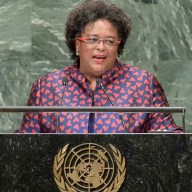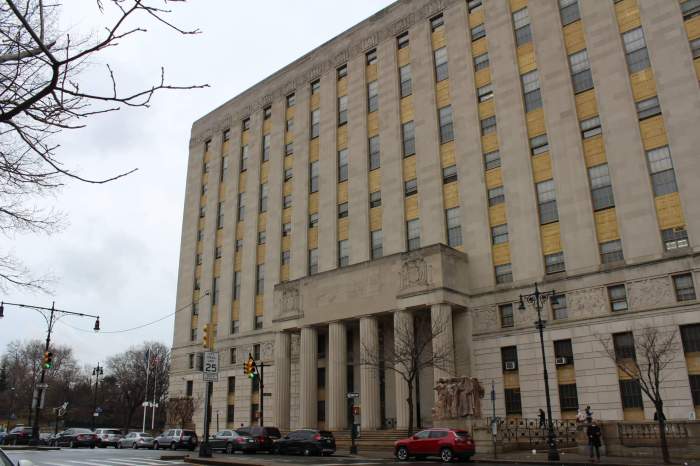The United Nations’ Economic Commission for Latin America and the Caribbean (ECLAC) says that the region received US$153.448 billion from foreign direct investment (FDI) last year.
In a new report, “Foreign Direct Investment in Latin America and the Caribbean 2011,” released in Santiago, Chile on May 3, ECLAC said the new figure represents 10 percent of the global total flows.
It said this is about the largest amount of FDI received by the region so far.
In 2010, ECLAC said the region received US$120.880 billion, whereas in 2009, due to the international economic crisis, investments decreased to US$81.589 billion.
Until then, the highest record had been registered in 2008, when investments amounted to US$137.001 billion, ECLAC said.
In 2011, the main foreign direct investment recipients in the region were Brazil (US$66.660 billion, representing 43.8 percent of the total of flows into the region), Mexico (US$19.440 billion), Chile (17.299 billion), Colombia (US$13.234 billion), Peru (US$7.659 billion), Argentina (US$7.243 billion), Venezuela (US$5.302 billion) and Uruguay (US$2.528 billion).
Of these countries, Brazil, Chile, Colombia, Peru and Uruguay reached “historic records,” ECLAC said.
In Central America, ECLAC said FDI incomes increased by 36 percent compared to 2010, where the amounts received by Panama (US$2.790 billion), Costa Rica (US$2.104 billion) and Honduras (US$1.014 billion) stand out.
In the Caribbean, flows soared by 20 percent compared to the previous year, with the Dominican Republic at the head with US$2.371 billion, ECLAC said.
“In spite of the prevailing uncertainty in global financial markets, Latin American and Caribbean economies attracted important amounts of foreign direct investment during 2011,” said Alicia Bárcena, ECLAC’s executive secretary.
“These amounts should remain high in 2012,” she added.
In 2011, ECLAC said 46 percent of the net income deriving from FDI was due to profit re-investments, whilst the remaining percentage was due to capital contributions and loans among companies.
According to the organization, this denotes the “trust of transnational companies in the region and important business opportunities within it.”
As shown in the report, ECLAC said this tendency, which started in 2002, is a result of the amount of assets accumulated by transnational companies in the region and an increase in their profitability due to the good economic performance of the countries and to high international prices of exported raw materials.
Nevertheless, ECLAC identifies a current phenomenon that is increasingly relevant since 2004: the growing repatriation of profits by transnational corporations investing in the region, “a fact that reminds that FDI is not a unidirectional flow.”
“FDI revenue transferred back to the countries of origin has increased from US$20 billion per year between 1998 and 2003 to US$84 billion between 2008 and 2010 per year,” Bárcena said.
The document also points out that FDI strengthens the specialization of production in Latin America and the Caribbean.
In 2011, it says 57 percent of foreign direct investments received by South America (except Brazil) were directed to the natural resources sector, 36 percent to services and 7 percent to manufacturing. In exchange, 7.8 percent of FDI received by Mexico, Central America and the Caribbean were oriented to natural resources, 39.7 percent to manufacturing and 52.5 percent to services.
Meanwhile, 46.4 percent of foreign direct investments received by Brazil were directed to manufacturing, 44.3 percent to services and 9.2 percent to natural resources, the report says.
“In this context, it is urgent to promote policies to guide FDI and leverage its potential benefits, among which are the knowledge and technological exchange and the increase of local capacities by strengthening national innovation systems, creating production chains, building human capacity and fostering local entrepreneurial development,” Bárcena said.
Investments made by Latin American and Caribbean transnational corporations -also known as trans-Latins- decreased to US$ 22.605 billion in 2011 – having amounted to US$44.924 billion in 2010, ECLAC said.
In spite of this decrease, ECLAC underlined that these corporations are still in an expansion phase.
The ECLAC report shows that the European Union (EU), as a bloc, is the largest investor in Latin America and the Caribbean.
In the last decade, the EU invested an average of US$30 billion per year in the region, representing 40 percent of the total received, ECLAC said.
“European investments, which have been mainly directed to South America, are widely diverse and strongly relevant to strategic sectors such as electricity and banking,” it said.
Among the main investors in 2011, the United States (18 percent), Spain (14 percent), the Latin American and Caribbean region itself (9 percent) and Japan (8 percent) – among others – stand out, ECLAC said.
ECLAC estimated that, in 2012, the FDI flows to Latin America and the Caribbean will maintain high levels.
Nevertheless, the organization warns that if the crisis in the eurozone worsens, the flow of investments -especially those coming from Europe- could be reversed.
“Due to this uncertainty and to the attractive position of Latin America and the Caribbean to transnational companies, the organization anticipates that inflows to the region deriving from FDI in 2012 will vary between -2 percent and 8 percent, compared to inflows in 2011,” ECLAC said.



























